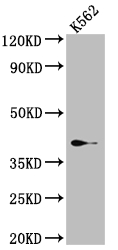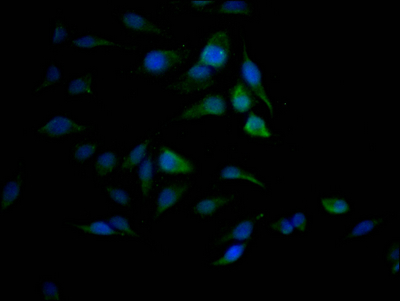The process of producing the SAE1 recombinant antibody involves four main steps. Firstly, the SAE1 monoclonal antibody gene is sequenced. Next, the gene is cloned into a plasmid vector. After that, the recombinant vector is introduced into a host cell line. Then, the SAE1 recombinant monoclonal antibody is purified from the cell culture supernatant using affinity chromatography. Finally, the purified antibody is tested and characterized. The SAE1 monoclonal antibody is developed from the SAE1 antibody-producing hybridomas and a synthesized peptide derived from human SAE1 is used as the immunogen during its production. This SAE1 recombinant monoclonal antibody is recommended for use in ELISA, WB, and IF applications to detect human SAE1 protein.
The SAE1 protein plays a crucial role in the process of protein sumoylation, which can alter protein function, stability, localization, and interactions with other proteins. The SAE1 protein, along with its binding partner SAE2, forms the heterodimeric SUMO-activating enzyme (SAE) complex, which is responsible for activating SUMO proteins by catalyzing the formation of a thioester bond between the C-terminus of SUMO and a cysteine residue on SAE1. This activates the SUMO protein, allowing it to be transferred to a target protein by SUMO-conjugating enzymes, resulting in the sumoylation of the target protein. It also participates in regulating various cellular processes, including DNA repair, transcriptional regulation, and protein localization. Dysregulation of sumoylation has been associated with several human diseases, including cancer, neurodegenerative disorders, and viral infections, highlighting the importance of SAE1 in maintaining cellular homeostasis.





